German WW2 Era Hf.13 Gulaschkanone
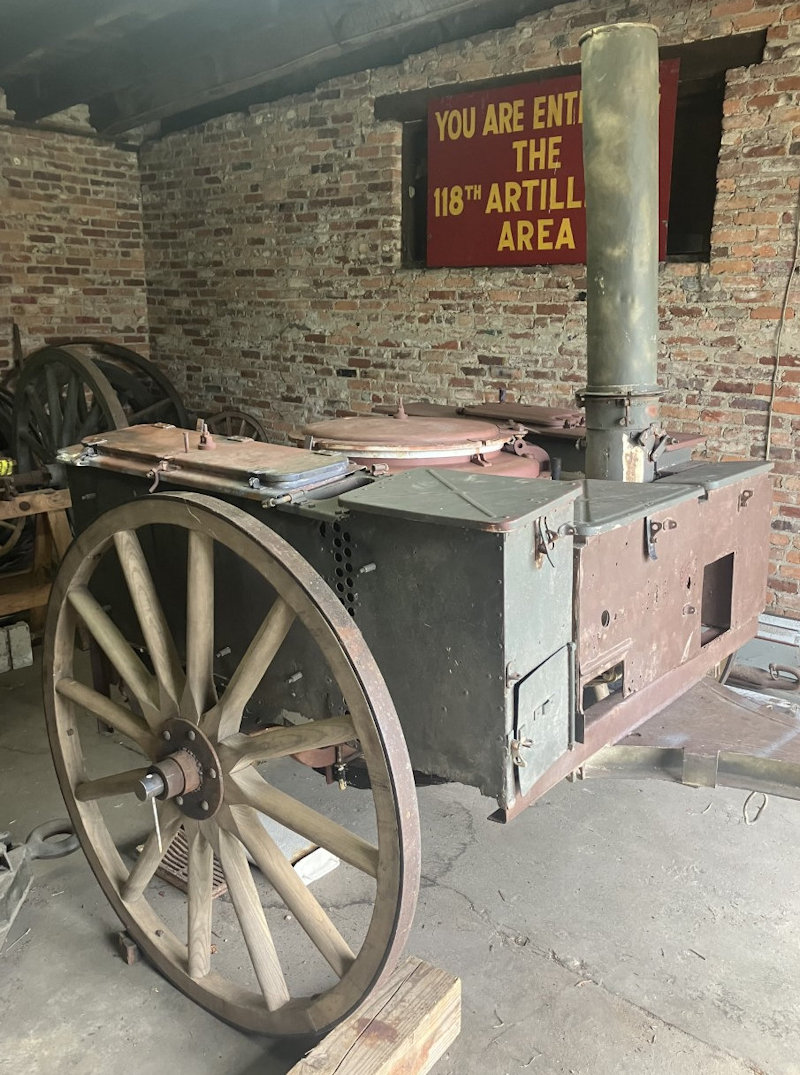 |
Above: The German “Gulaschkanone” was present throughout WW1 and WW2. These simple wood burning stoves mounted on a caisson like wagon frame could feed hundreds of men hot food even while on the march. They were found throughout the branches of the German Army including Artillery, and Anti-Tank units. Many original photos show the Gulaschkanone in service surrounded by smiling soldiers. These photos do not seem to be propaganda works. Troops are almost always happy when served hot food in austere conditions. The example in the Lovett Collection is the large model. There are two variations of this large horse drawn field kitchen, the Hf.11 which was in service as early as WW1 and continued a career until the end of WW2. After WW1, the Hf.13 was brought into German Army service. It is almost as symbolic of the average German soldier’s life at the front as the steel helmet, the Mauser rifle, and the potato masher grenade. The Hf.13 only differs from the older Hf.11 in a few details such as having a cylinder-shaped smokestack, versus the Hf.11 tapered stack. The Hf.13 in the collection is dated 1942 and undoubtedly saw heavy service in WW2
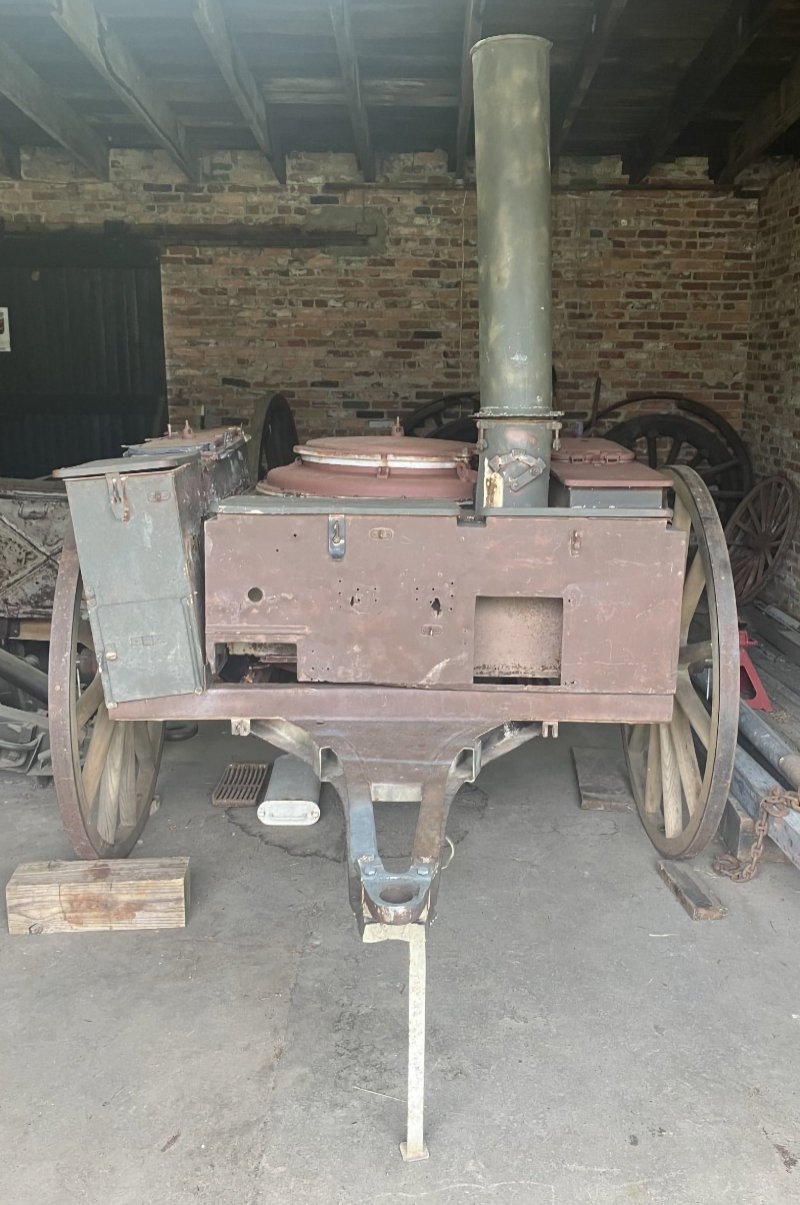 |
Above: A front view of the Hf.13 Gulashkanone showing the lunette hitch for it to mount to the Gulaschkanone Limber (protze). The limber would have one or two horse teams harnessed in order to tow the Hf.13 on the march. This lunette is damaged and will be repaired. The simple cylinder-shaped smokestack is also seen in this view. It can be folded back on the march. In this way, the field kitchen looks even more like another cannon with its barrel rear facing as it is towed behind a similar limber and horse team to the other artillery of the battery
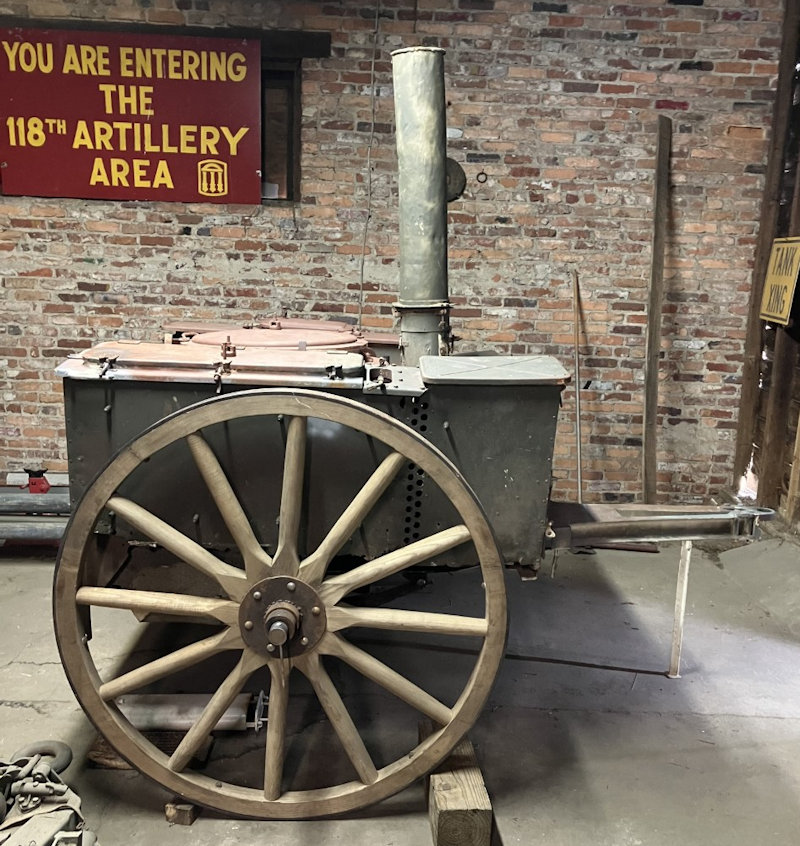 |
Above: A side view of the Hf.13 Field Kitchen showing a 29 gallon coffee boiler, and a storage compartment for glycerin and axel grease. Something that I did not fully comprehend until getting this Gulaschkanone is that these compartments are fairly easily removable. There is a steel plate missing on the side that presumably would have served as a barrier to the thin sheet metal of the coffee boiler and likely to prevent heat injury from touching the heated surfaces
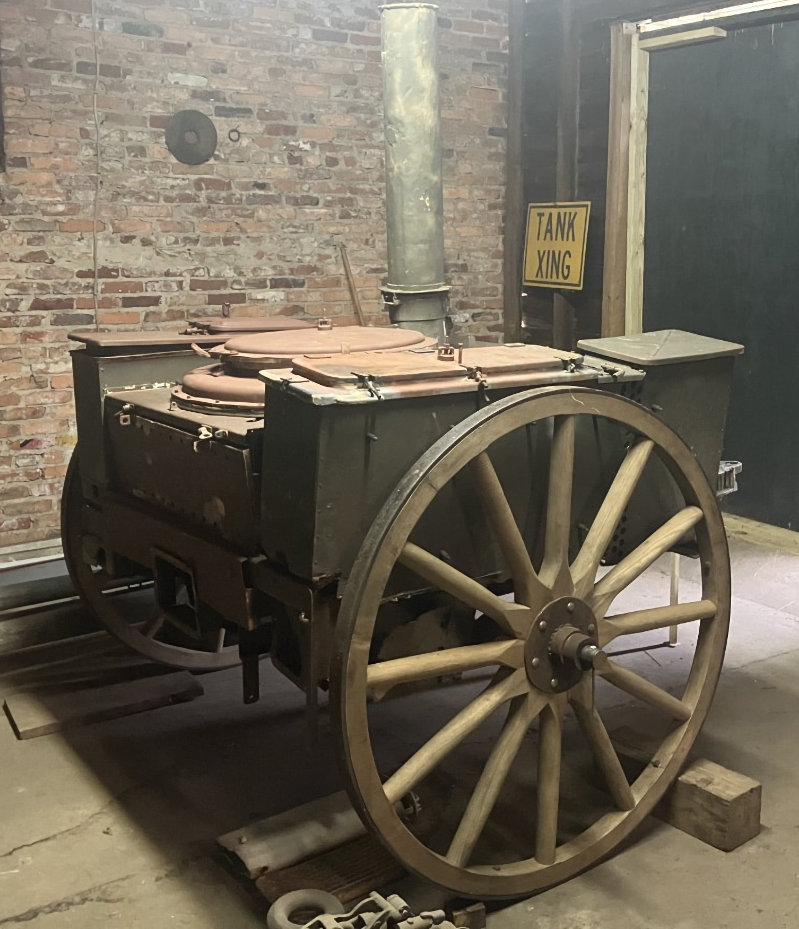 |
Above: Another side view but at this angle you can see the three stoves under the three compartments of the Hf.13 Field Kitchen
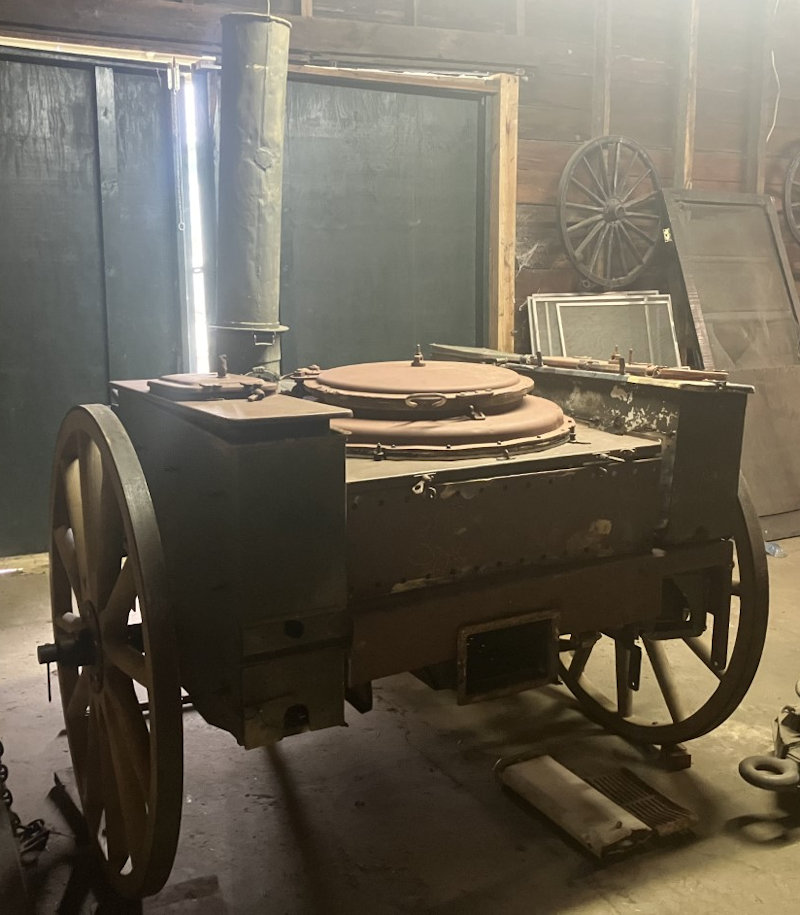 |
Above: This rear view shows the three stove openings under the three cooking/boiling compartments of the field kitchen
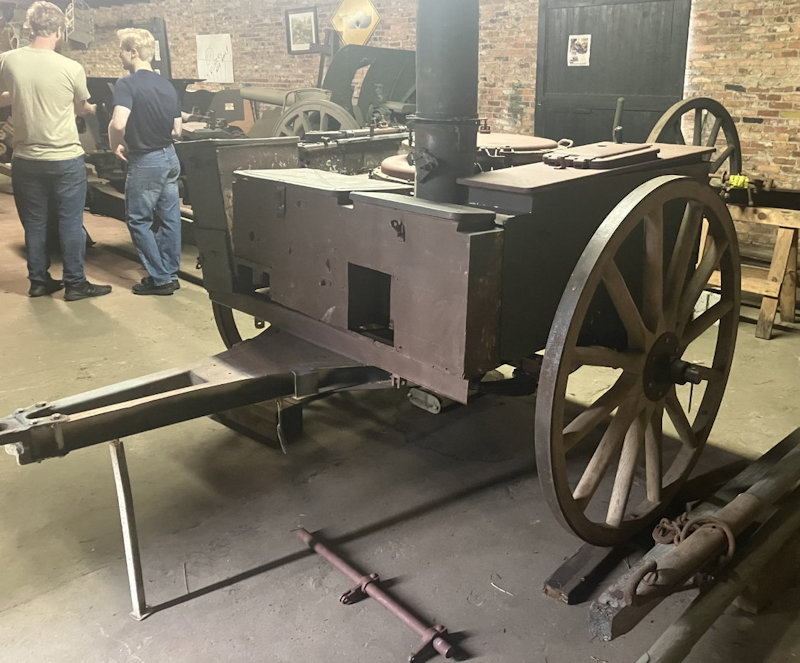 |
Above: Another front view with a few potential soup and coffee customers in the background
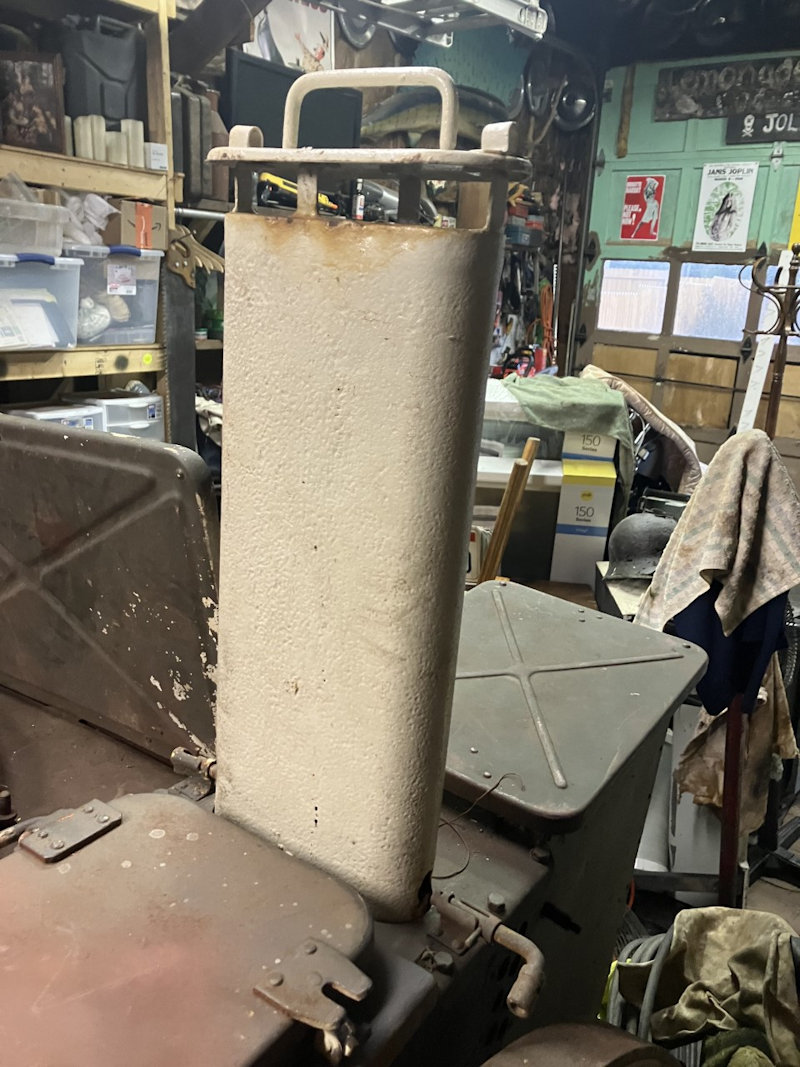 |
Above: Collapsible chimney roster. I understand this could have been used for sausages. Looking at original photos of the Hf.13 it seems most did not have this feature. However, it was still a wartime variation of the Hf.13
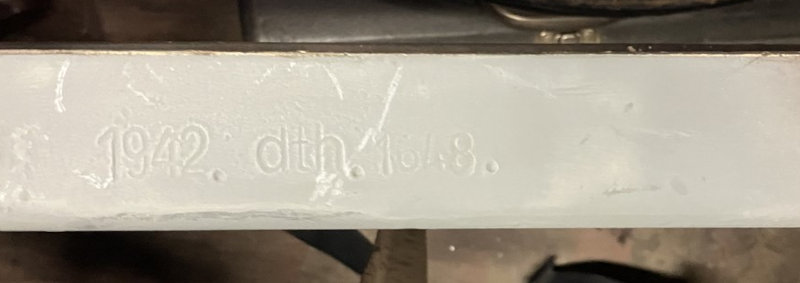 |
Above: The Hf.13 Gulaschkanone in the Lovett Collection is dated 1942 and has the three letter manufacturer code of “dth” and the serial number 1648. I understand that the manufacturer “dth” refers to A. Voss from Lohne, Oldenburg, Germany
 |
Above: Another front view of the Hf.13
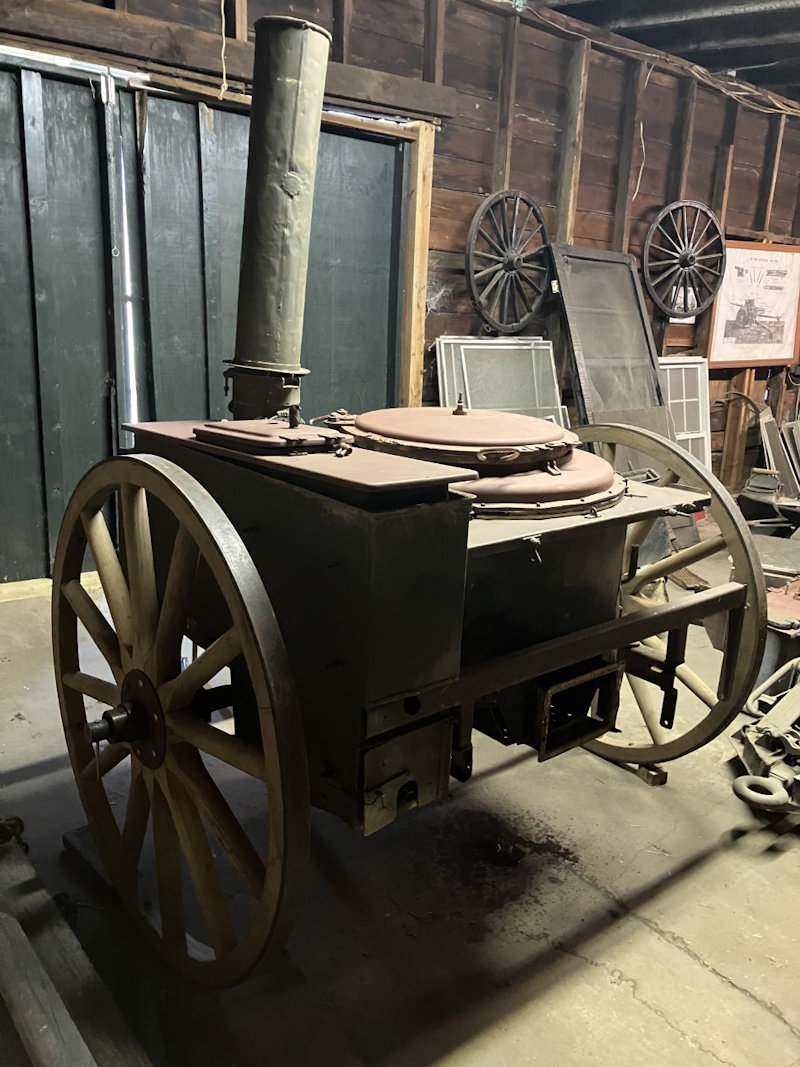 |
Above: A view of the Hf.13 with a side compartment and the rear cover removed
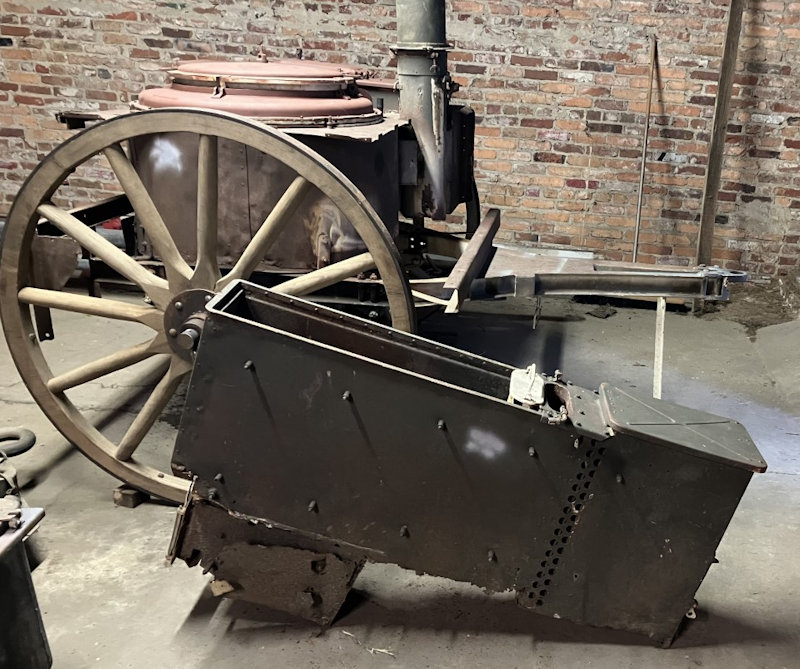 |
Above: The side stove and coffee compartment removed
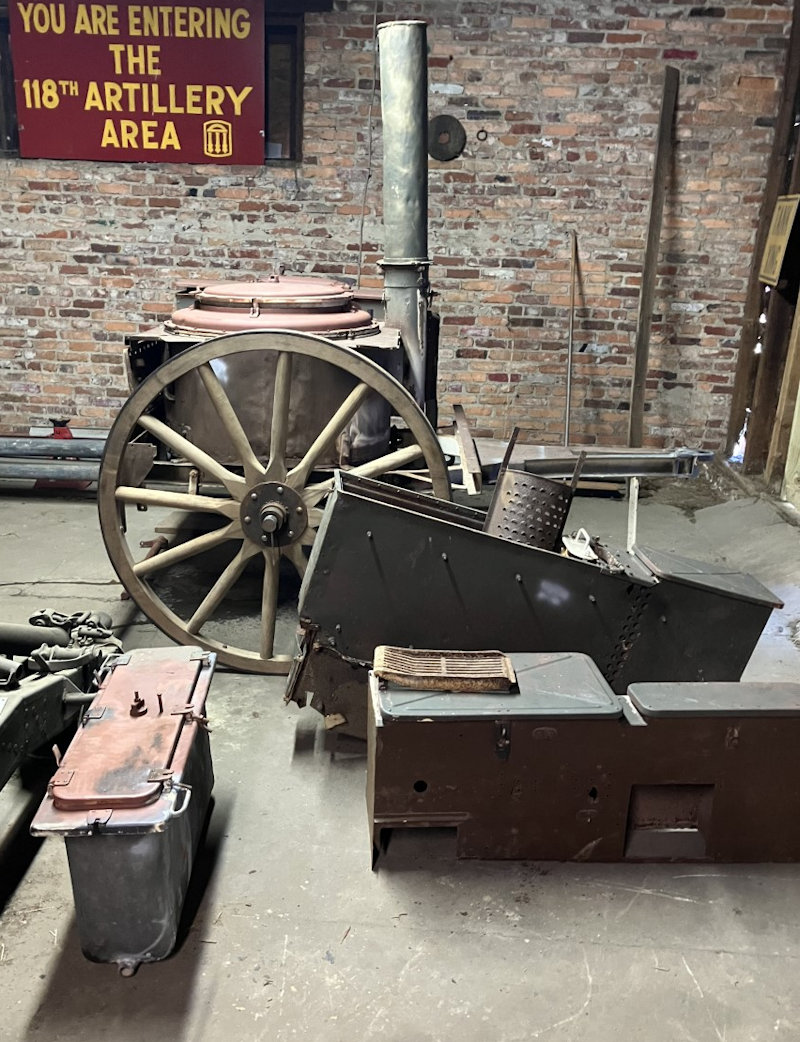 |
Above: Several compartments removed
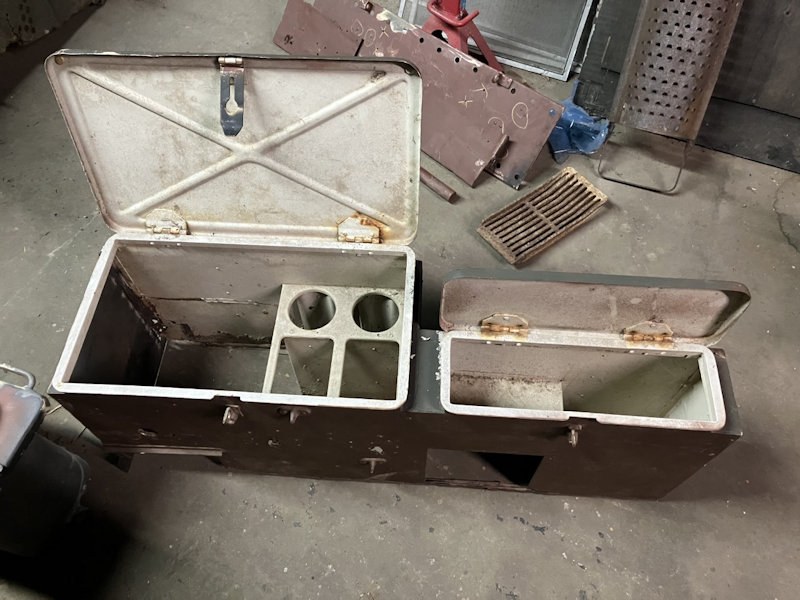 |
Above: Compartments for salt, coffee, a coffee grinder and other materials
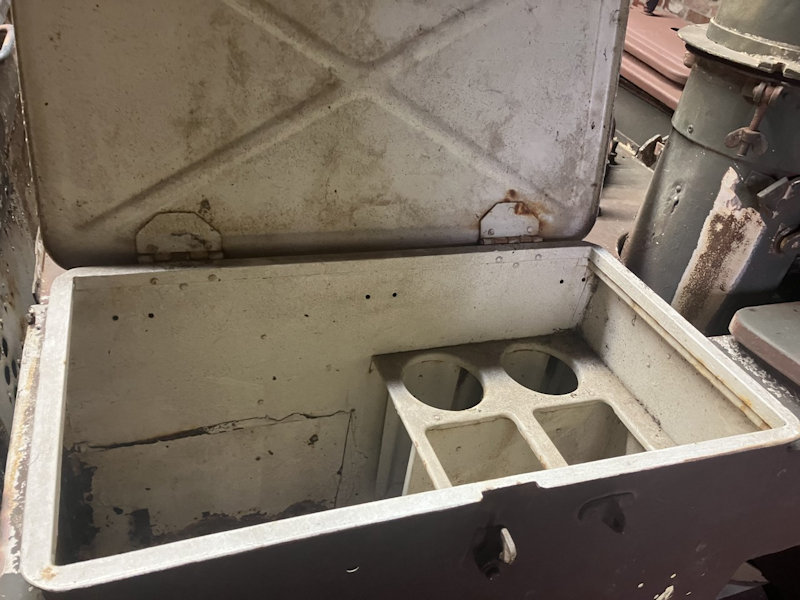 |
Above: Compartment for salt, coffee, a coffee grinder and other materials
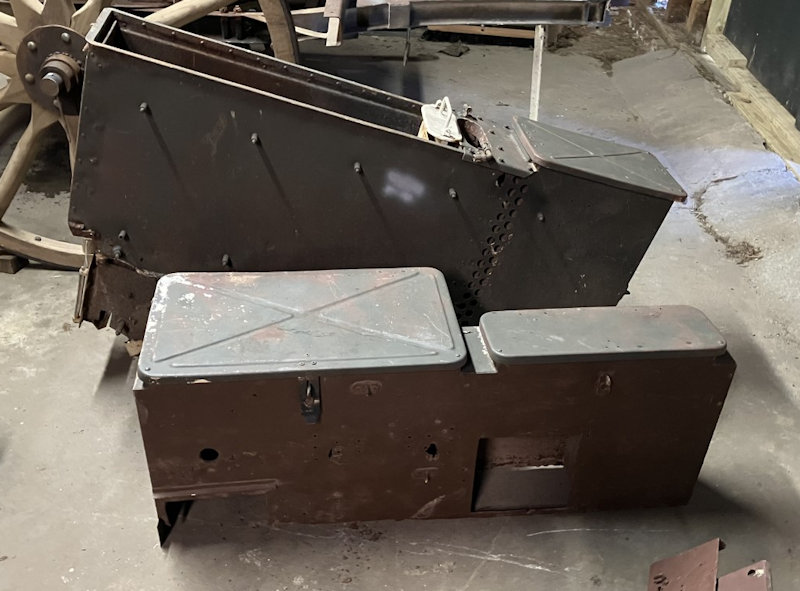 |
Above: Compartments for salt, coffee, a coffee grinder and other materials
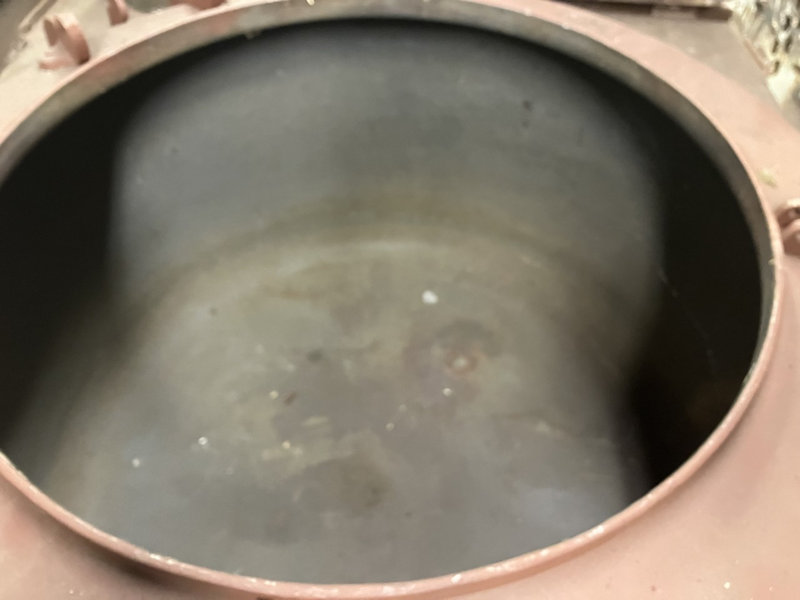 |
Above: 53/46 gallon enameled pressure cooker double boiler
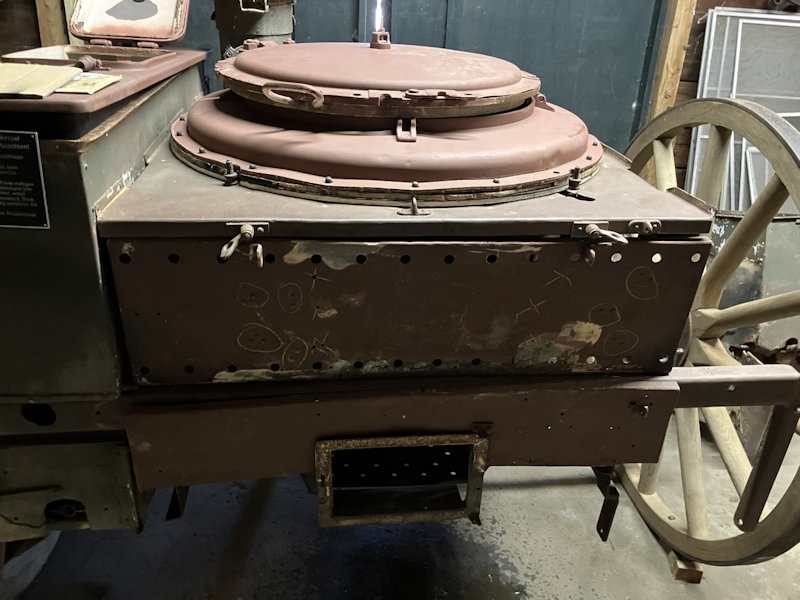 |
Above: Rear view
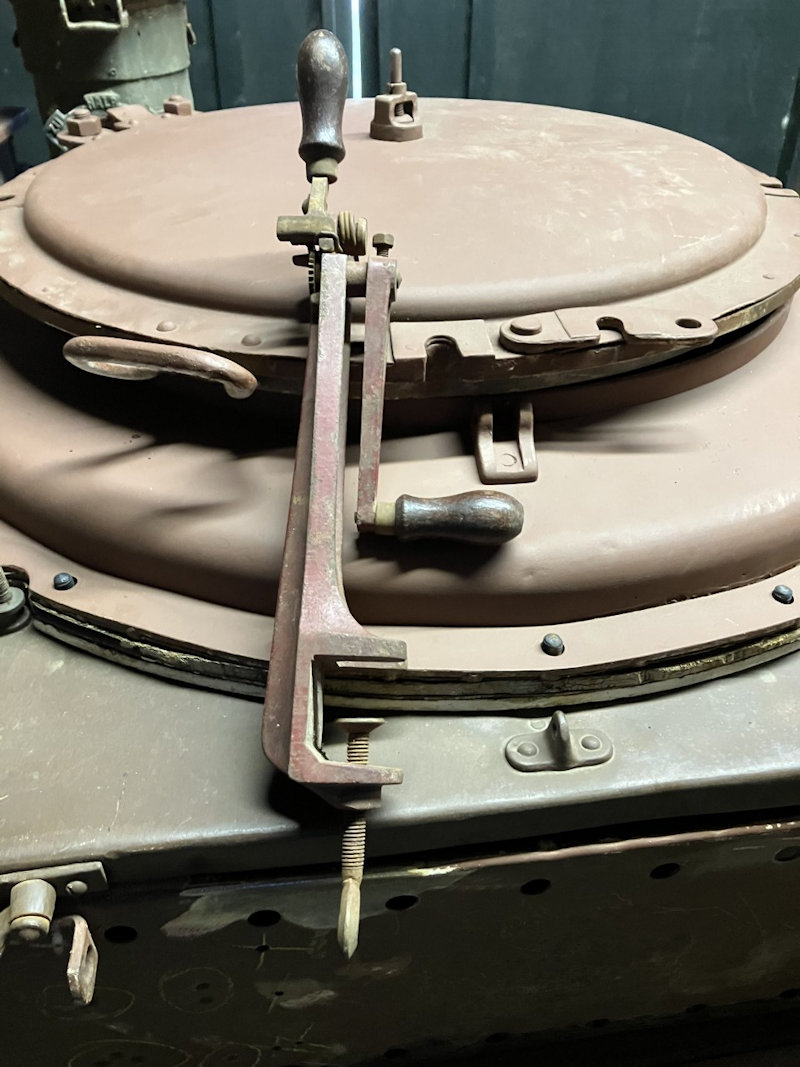 |
Above: A large can opener sitting on top of the boiler lid
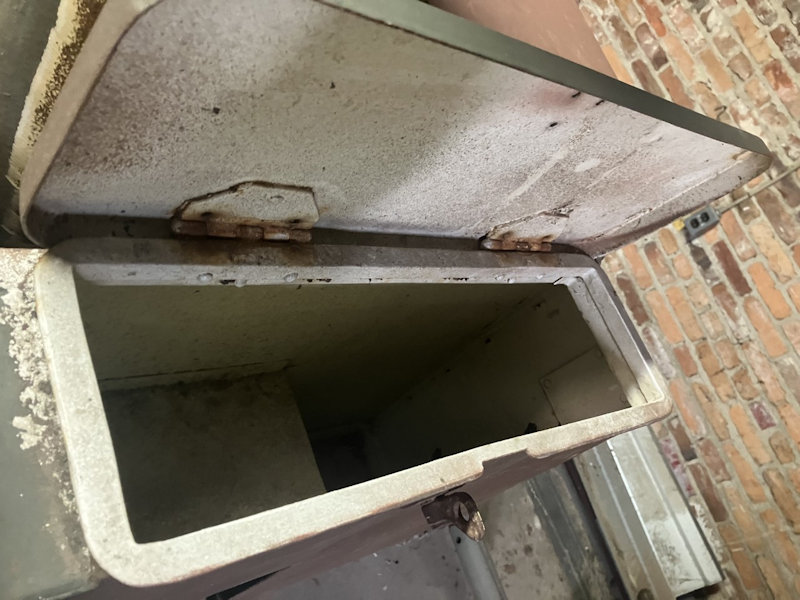 |
Above: Container for cans of axel grease, a meat grinder and other materials
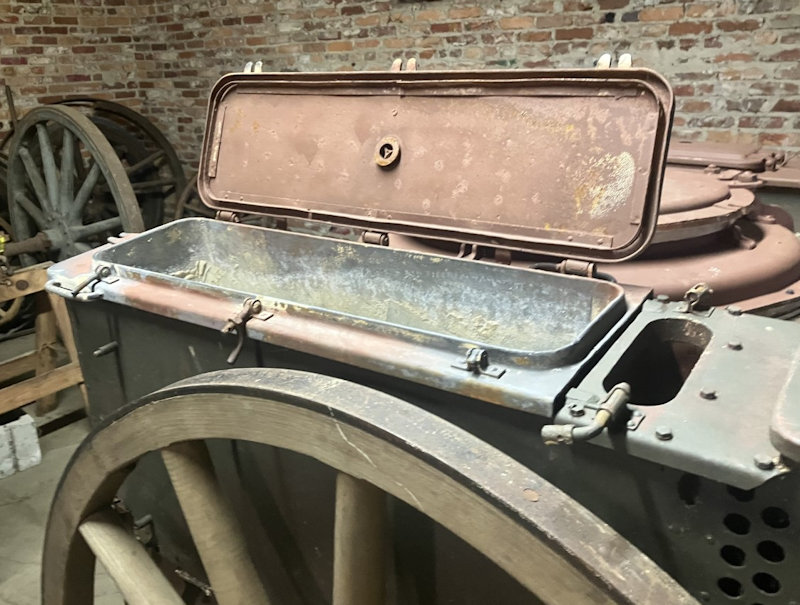 |
Above: The hatch for the removable 29 gallon coffee boiler
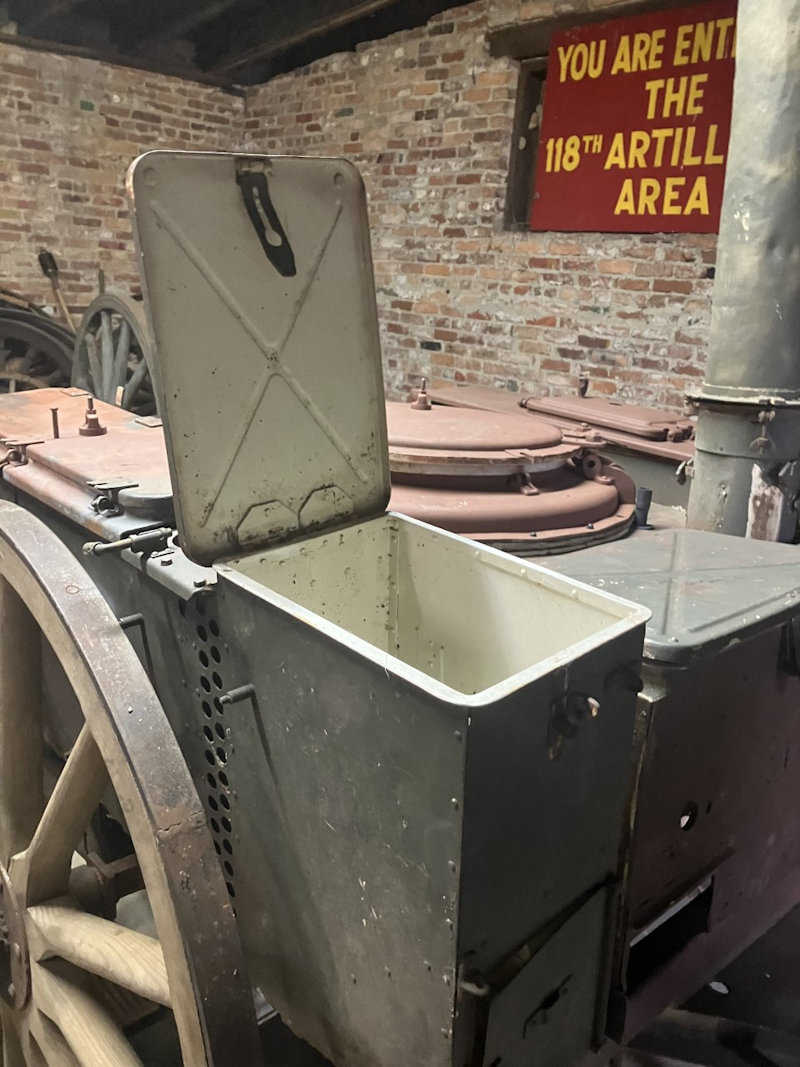 |
Above: Front view
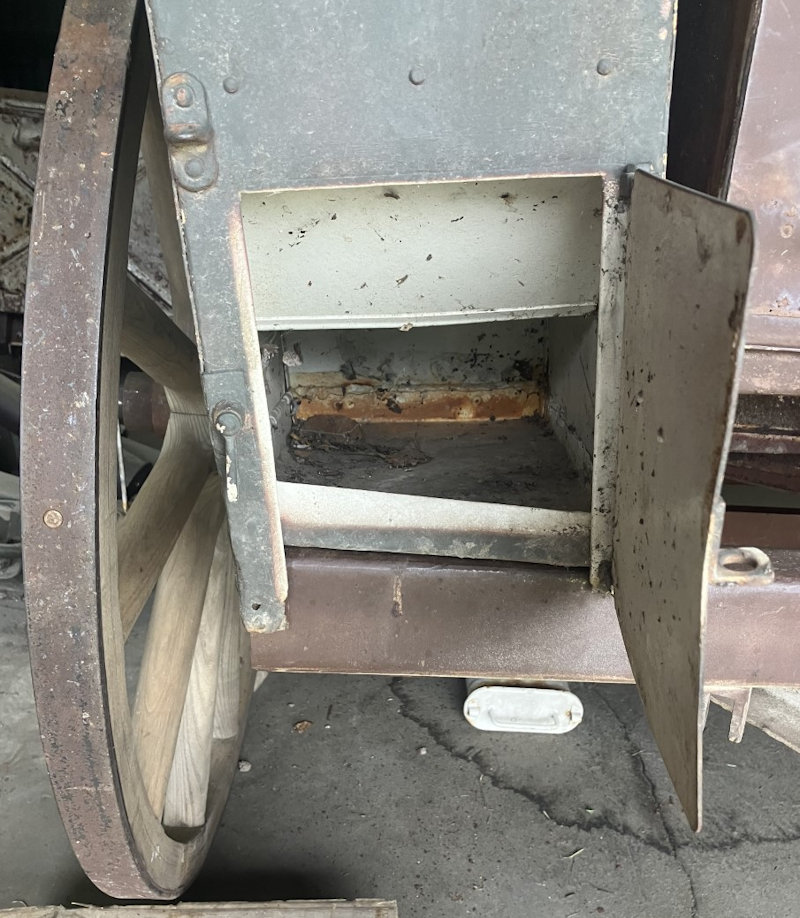 |
Above: Front view
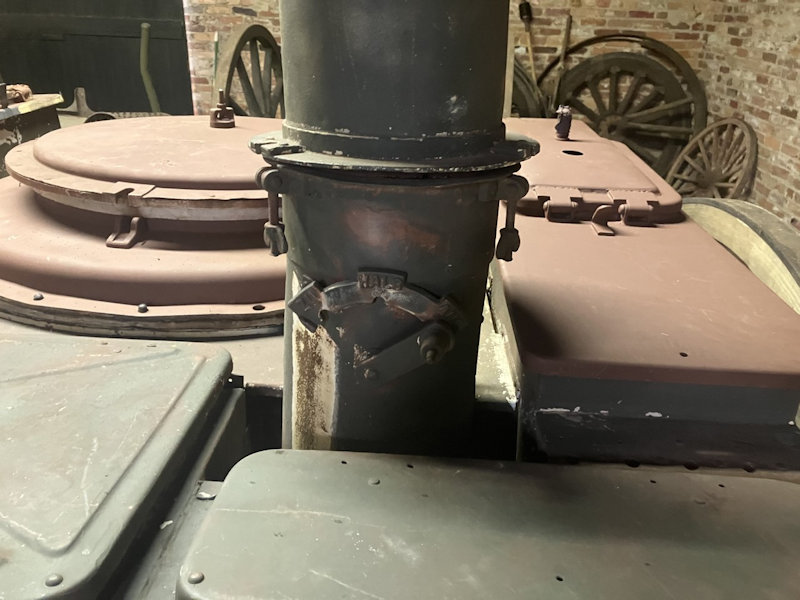 |
Above: Base of the smokstack
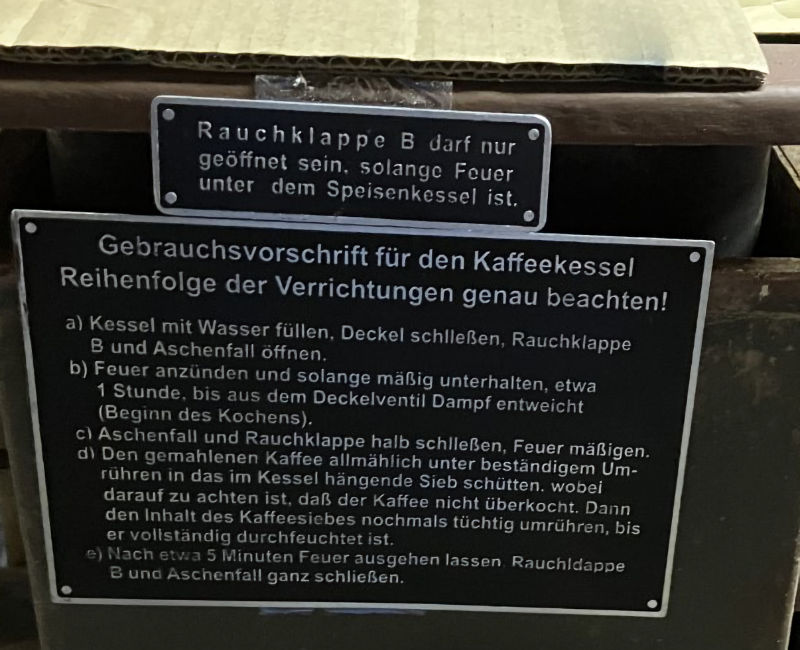 |
Above: New made instruction plates for the Hf.13